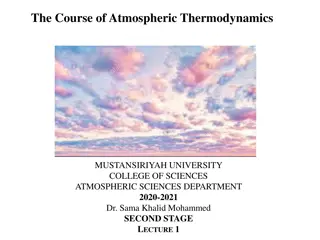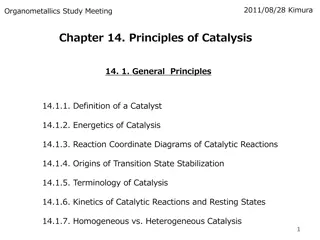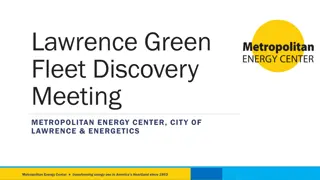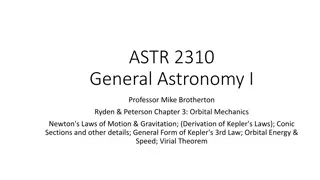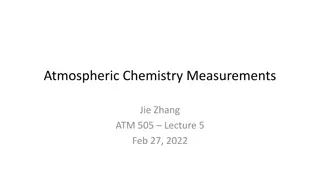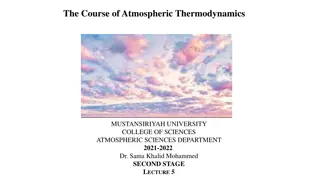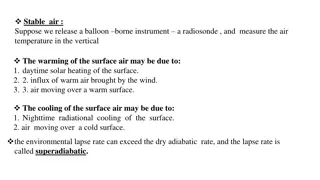Understanding Atmospheric Energetics and Dynamics
Explore the intricate relationship between atmospheric energetics and baroclinic instability, illustrated through images and figures depicting the energy cycle, conversion rates, and generation/dissipation rates. Learn about potential and kinetic energy variations, as well as the observed global trends in energy distribution over time.
Download Presentation

Please find below an Image/Link to download the presentation.
The content on the website is provided AS IS for your information and personal use only. It may not be sold, licensed, or shared on other websites without obtaining consent from the author. Download presentation by click this link. If you encounter any issues during the download, it is possible that the publisher has removed the file from their server.
E N D
Presentation Transcript
Atmospheric Energetics Atmospheric Energetics Ties to Baroclinic Instability
Two buckets with equal amounts of water. B) A) In which one will spontaneous motion occur?
Two atmospheres with equal amounts of heat. (?2 > ?1) B) A) ?2 ?1 ?2 ?1 In which one will spontaneous motion occur?
Atmospheric energy cycle
Observed atmospheric energy cycle
Observed atmospheric energy cycle: Fast vs slow
Observed atmospheric energy cycle: Fast vs slow
Figure 1 Figure 1: Time series of the global-average atmospheric energies. (a) The mean available potential energy PM. (b) The mean kinetic energy KM. (c) The eddy available potential energy PE. (d) The eddy kinetic energy KE. (e) The total mechanical energy (that is, PM+KM+PE+KE). (Pan et al., 2017, Nature Communications)
Figure 2: Time series of the global-average conversion rates. (a) The conversion rate between the mean available potential energy and the eddy available potential energy C(PM, PE). (b) The conversion rate between the eddy available potential energy and the eddy kinetic energy C(PE, KE). (c) The conversion rate between the eddy kinetic energy and the mean kinetic energy C(KE, KM). (d) The conversion rate between the mean available potential energy and mean kinetic energy C(PM, KM). (Pan et al., 2017, Nature Communications)
Figure 3: Time series of the global-average generation and dissipation rates. (a) The generation rate of the mean available potential energy G(PM). (b) The dissipation rate of the mean kinetic energy D(KM). (c) The generation rate of the eddy available potential energy G(PE). (d) The dissipation rate of the eddy kinetic energy D(KE). (Pan et al., 2017, Nature Communications)



